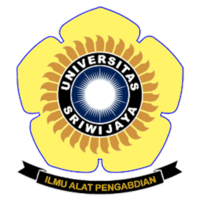Evaluasi Sifat Fisik Tanah Pengendali Kemampuan Tanah Memegang Air dan Memasok Air Bagi Tanaman serta Kaitannya Dengan Manajemen Pertanian pada Lahan Sub Optimal
Abstract
Rachman LM, Baskoro DPT, Wahjunie ED, Nurmilah A, Astriani T, Dewi NM. 2019. Evaluation of the physical properties of controlling soil capabilities holding water and supplying water for plants and its association with agricultural management on sub-optimal lands. In: Herlinda S et al. (Eds.), Prosiding Seminar Nasional Lahan Suboptimal 2019, Palembang 4-5 September 2019. pp. 111-120. Palembang: Unsri Press.
Utilization and optimization of marginal land or sub-optimal land is needed to support the government's food security program. Rainfed sub-optimal land, although quite extensive (2,247,527 ha) and still potential enough to be utilized. However, the current low productivity due to a variety of biophysical constraints, required input and recommendation technology appropriate land management to increase productivity. Sub optimal rainfed land including dry land. One serious obstacle faced is often experiencing water shortages or droughts during the dry season. However, the current low productivity due to a variety of biophysical constraints, required input and recommendation technology appropriate land management to increase productivity. Sub optimal rainfed land including dry land. One serious obstacle faced is often experiencing water shortages or droughts during the dry season. The lack of water in the plant root zone can basically be caused by: 1) lack of water supply, 2) low soil capacity to hold and supply water for plants, or 3) a combination of both. For this reason, it is necessary to have accurate and comprehensive data and information about the ability or capacity of the soil to hold and store soil water holding capacity. The purpose of this study is to examine the characteristics of physical properties of land in sub-optimal land that controls the ability or capacity of the soil to hold or hold and store water so that directions can be arranged for agricultural management in sub-optimal lands to increase productivity. The location of the study whose data was reviewed in this study included the areas of Bogor, Lebak, Pandeglang and Serang. Some of the soil physical properties studied were soil bulk density, soil texture, stability of soil aggregate stability index, total soil porosity, distribution of soil pores, and soil organic matter content. Evaluation results indicate that in general the characteristics of the physical properties of the soil associated with its ability to supply water are available to plants and hold and store water are classified as moderate. Directions for recommendations for processing and managing soil for agricultural management are adjusted to the conditions and characteristics of the soil.
Utilization and optimization of marginal land or sub-optimal land is needed to support the government's food security program. Rainfed sub-optimal land, although quite extensive (2,247,527 ha) and still potential enough to be utilized. However, the current low productivity due to a variety of biophysical constraints, required input and recommendation technology appropriate land management to increase productivity. Sub optimal rainfed land including dry land. One serious obstacle faced is often experiencing water shortages or droughts during the dry season. However, the current low productivity due to a variety of biophysical constraints, required input and recommendation technology appropriate land management to increase productivity. Sub optimal rainfed land including dry land. One serious obstacle faced is often experiencing water shortages or droughts during the dry season. The lack of water in the plant root zone can basically be caused by: 1) lack of water supply, 2) low soil capacity to hold and supply water for plants, or 3) a combination of both. For this reason, it is necessary to have accurate and comprehensive data and information about the ability or capacity of the soil to hold and store soil water holding capacity. The purpose of this study is to examine the characteristics of physical properties of land in sub-optimal land that controls the ability or capacity of the soil to hold or hold and store water so that directions can be arranged for agricultural management in sub-optimal lands to increase productivity. The location of the study whose data was reviewed in this study included the areas of Bogor, Lebak, Pandeglang and Serang. Some of the soil physical properties studied were soil bulk density, soil texture, stability of soil aggregate stability index, total soil porosity, distribution of soil pores, and soil organic matter content. Evaluation results indicate that in general the characteristics of the physical properties of the soil associated with its ability to supply water are available to plants and hold and store water are classified as moderate. Directions for recommendations for processing and managing soil for agricultural management are adjusted to the conditions and characteristics of the soil.
Keywords: agricultural management, land management, soil physical properties, sub- optimal land, soil water holding capacity
Full Text:
PDFArticle Metrics
Abstract view : 1803 timesPDF - 1662 times
Refbacks
- There are currently no refbacks.

